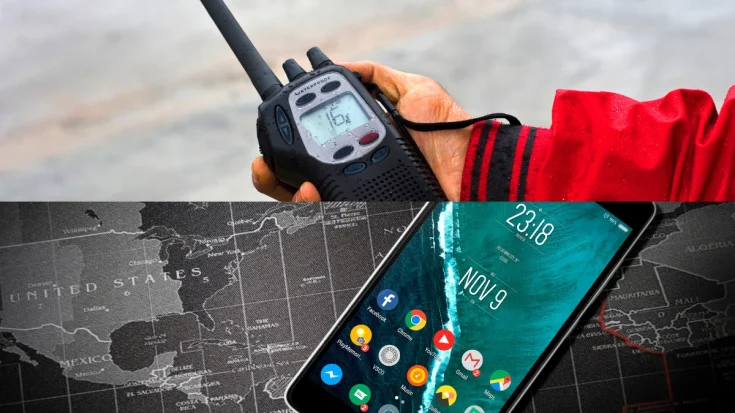Very High Frequency (VHF) and Ultra High Frequency (UHF) are the keys to supporting radio communication. Although both are high frequency, VHF and UHF have some significant differences.
The differences between VHF and UHF cover several aspects such as frequency range, wave propagation, application example of deployment, interference, advantages, and disadvantages.
This article will delve into the important differences between VHF and UHF, the two types of radio frequency bands that are used in some applications.
Also Read
Table of Contents
What is a VHF?

Very High Frequency (VHF) is a radio wave frequency that is between 30 MHz – 300 MHz. These frequencies are often used for two-way communications over a wide range, such as those used for ship-to-ship or ship-to-shore communications, shore stations, aviation communications, and FM radio broadcasting.
VHF has good signal clarity and the ability to penetrate certain obstructions, although it has a limited range compared to lower frequencies. These frequencies with good signal clarity are important for short- and medium-range communication systems.
What is an UHF?

Ultra High Frequency (VHF) is a radio wave frequency between 300 Mhz – 3 GHz. This frequency is often used in various needs such as television broadcasting, cellular phones, wireless communication, and navigation systems.
UHF has good penetration for indoor communication with a wide range. These frequencies also suffer less interference for use in urban environments.
Difference Between VHF and UHF

The VHF and UHF are both using for long distance communication, but they have some differences. Here are five fundamental differences between VHF and UHF:
1. Frequency range
VHF: Has a frequency range of 30 MHz – 300 MHz
UHF: Has a frequency range of 300 MHz – 3 GHz
2. Wave propagation
VHF: Has wider wave propagation, but is subject to the effects of physical obstacles.
UHF: Has a better ability to penetrate obstructions such as trees or vehicles.
3. Application
VHF: Used in two-way communication outdoors over long distances. Examples that use VHF are marine radio, radio, aviation, and communications.
UHF: Used in indoor two-way communication, for example, in office buildings, shops, and warehouses. Examples that use UHF are walkie-talkies and some security systems.
4. Example of deployment
VHF: Farming, agriculture, road and bridge construction, search, rescue, logistics, transportation, forestry, and offshore.
UHF: Construction sites, manufacturing, factories, warehouses, hotels, hospitals, museums, theatres, shopping centres, schools, colleges, and universities.
5. Interference
VHF: Tends to be less susceptible to interference as the frequency is lower.
UHF: Tends to be more susceptible to interference due to its higher frequency.
6. Advantages
VHF: Suitable for long-distance communication in open areas, as it has a longer range at a lower transmitter cost.
UHF: Suitable for indoor communication with its ability to penetrate barriers better and with less interference.
7. Disadvantages
VHF: Susceptible to urban environment interference and less effective in penetrating obstructions.
UHF: Has more expensive transmitter costs with shorter antennas and range.
That’s the difference between VHF and UHF that you need to know when using the application that uses these two types of high frequency. Another thing that you need to know is that VHF and UHF are not compatible with each other.
If you need communication in the outdoor area with a wider range, a VHF is a good choice that can make your communication. However, if you just need communication in an indoor area with a physical obstacle, you can choose an UHF.











